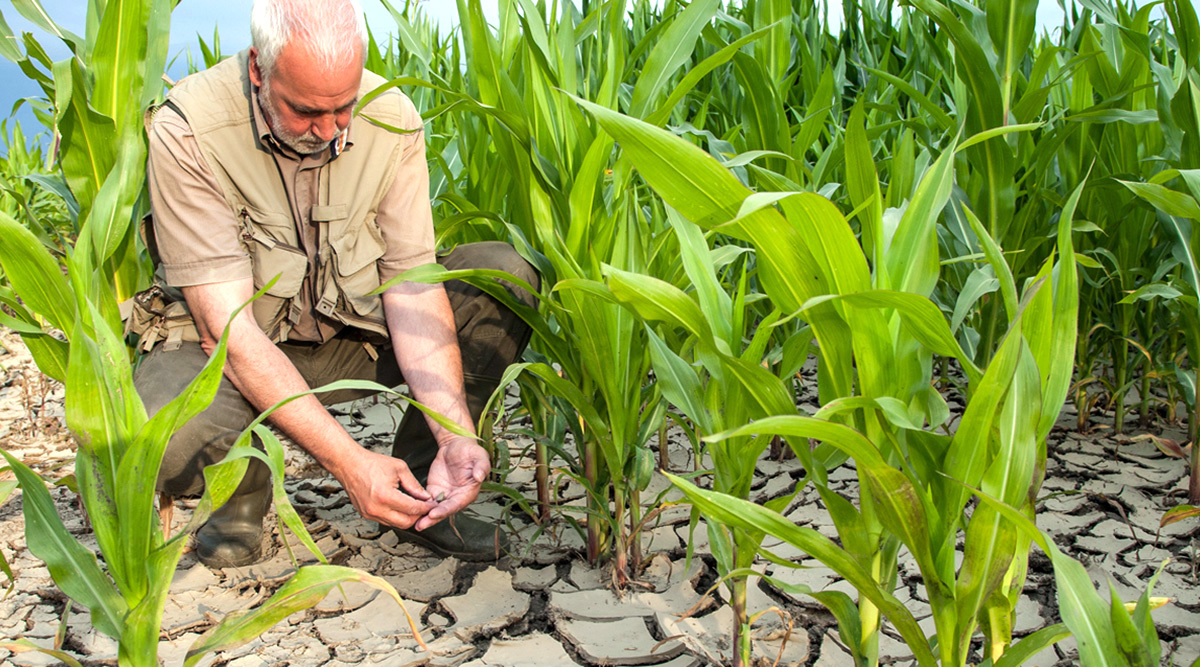Improving Ag in the Face of Climate Change
The challenge of agricultural waste and inefficiency includes an overlay of concern about environmental sustainability and, more extremely, climate change.

March 2022
Volume 76, No. 2
As with everything else that relates to economic production these days, the challenge of agricultural waste and inefficiency includes an overlay of concern about environmental sustainability and, more extremely, climate change.
“We’ve got to wake up as a society,” says John Purcell, president and CEO of Unfold, an indoor-farming startup. “This is not a theoretical conversation; it’s real. We have billion-dollar weather events this decade that we didn’t see in previous decades. We see pests we haven’t seen before because of warmer winters. There have been huge shifts in extremes: too much water or too little water, high and low temperatures.
“It’s absolutely become a risk-mitigation game, and climate change has introduced a whole suite of risks that are unpredictable and in some ways beyond our control.”
In Brazil, for instance, water conservation “wasn’t a big issue for farmers until a couple of years ago,” says Gustavo Porpino, an agricultural marketing specialist for the Brazilian government. “But then La Nina [weather events] and climate change made them take it more seriously.”
Ku McMahan, senior team lead at the U.S. Agency for International Development (USAID), notes, “Because of climate change, the times of year for planting are different. We know weather patterns and drought forecasts, but farmers in a traditional system don’t know that.” So Western governments are helping farmers in developing nations with technologies that gather and communicate more data about basic inputs that farmers around the world have. “Our job is to help farmers better use those and also protect them from the effects of drought and climate change,” continues McMahan.
Additionally, technologists are developing crops that tolerate a wider range of climatic conditions and provide more ways to control pests. Thwarting climate change, in fact, is providing a strong narrative for startups such as Endobiome, which finds ways for microbes to make crops more productive without synthetic fertilizers.
“Nitrogen fertilizers are the No. 1 cause of the increase in nitrous oxide in the atmosphere,” says Michael LaMontagne, founder of Endobiome. “It’s a highly potent, heat-trapping gas, and that contributes substantially to climate change.” His company is working on biofertilizers that could create “a 20% increase in yield or allow a grower to decrease the amount of fertilizer that’s applied while maintaining yield.”
For an in-depth look at how in research and technology are being used to reduce postharvest food losses while facing increasingly unstable climatic and economic conditions—see the March 2022 issue of Food Technology.
Digital Exclusives

10 Food Trend Predictions for 2022
The editors at Food Technology magazine, published by the Institute of Food Technologists (IFT), have announced their predictions for the hottest food trends for 2022.
More From Food Technology

Cultivating a Crop of Food System Solutions
Five organizations dedicated to eliminating hunger and sustainably boosting nutrition earn top honors in this year’s Seeding The Future Global Food System Challenge.

How to Achieve EPR-Forward Packaging, Part 2
In this two-part series, the author explores the history of Extended Producer Responsibility (EPR), what is needed to help EPR succeed, and how brands can best prepare for EPR.

How to Achieve EPR-Forward Packaging
In this two-part series, the author explores the history of Extended Producer Responsibility (EPR), what is needed to help EPR succeed, and how brands can best prepare for EPR.

Production Capacity Expands for Food to Fight Malnutrition
Production capacity for ready-to-use therapeutic food Plumpy’Nut at Edesia expands thanks to a Bezos family donation.

Future Food-Tech 2024 Tackles Transformation, Underscores Collaboration
Mission-driven Future Food-Tech exhibitors and conference presenters showcased innovative, transformative ingredients and technologies and emphasized the importance of collaboration in addressing food system challenges.
Recent Brain Food

The Promise of Underutilized and Biofortified Crops
A new IFT white paper explores two approaches with big potential for combating global malnutrition.
Supporting Sustainable Innovation
Health, welfare, and sustainability concerns have spurred consumers to explore plant-based alternatives. In this sponsored content interview, global ingredients company ofi discusses the forces driving this growing trend, and how it supports product innovation in this emerging category.
October Content Spotlight: Food and Nutrition Security
Stay up to date on the latest food and nutrition security topics and trends with IFT's featured resources, from blogs to peer-reviewed articles to solutions-based white papers.
Tackling Hunger and Nutrition on a Global Scale
IFT's Food and Nutrition Security Steering Committee is offering solutions to the challenges of hunger and food waste--and building community along the way.
IFT Science and Policy Team Forecasts Six Trends for 2023
From a processed foods comeback to breaking food system silos and addressing food and nutrition security, our science and policy experts identify top science of food trends.


